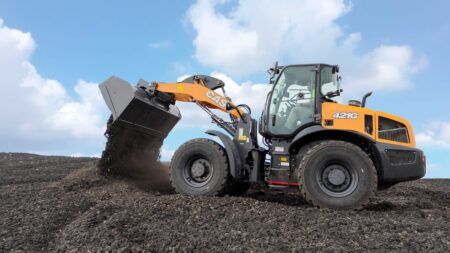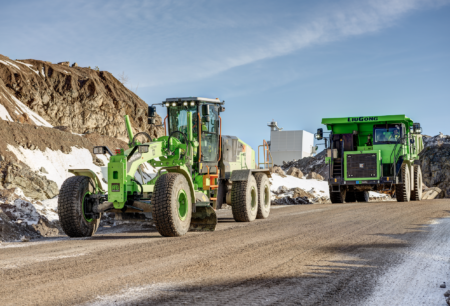The increase in exports of UK construction and earthmoving equipment is a result of a weaker pound following the Brexit vote, says the Construction Equipment Association (CEA).
The first quarter (Q1) of this year saw the UK export its largest tonnage of construction equipment since Q2 2015, amounting to £710m (US$916m) worth of machinery, the CEA reports. This is a 6.1% rise in weight terms and 13.2% in financial value compared with Q4 2016.
A CEA spokeswoman said, “This increase can be attributed to both improving demand in some of the major overseas markets, as well as the benefit of the weaker pound exchange rate since the middle of 2016, following the Brexit referendum.”
The USA remained the top destination for exports in Q1 2017, accounting for 19% of total exports on a weight basis, and 23% on a monetary basis. Collectively, exports to EU28 countries accounted for 48% of the total weight of machines exported in Q1, and 44% of the monetary value. These were similar proportions to the 2016 levels.
Imports of equipment also showed significant increases in Q1, and are following the same seasonal pattern as the last two years, when imports ‘peaked’ in Q3, and ‘bottomed’ in Q4. In Q1, imports showed a 34.1% increase on Q4 2016 in weight terms, and a 39.1% increase in terms of monetary value, reaching £390m (US$502m). In both cases, imports were also higher than Q1 2016 levels.
Japan remained the highest single country source of imports in Q1, accounting for 21% of total imports of equipment in weight terms. On a monetary value basis, Sweden edged ahead of Japan as the largest single import source, accounting for 19% of total imports in Q1.
The UK remains a net exporter of construction and earthmoving equipment, measured in both weight and value terms. In Q1, the trade surplus reduced to £312m (US$401m), from £340m (US$438m) in Q4 2016, but was still the highest quarterly surplus since Q4 2015.
May 26, 2017




